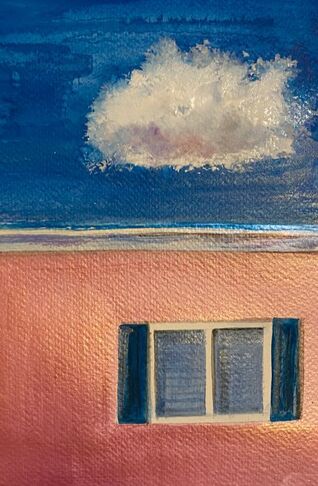Art for life ; Authentic Instruction in Art by Tom Anderson- Metaphor is an important creative trait. Creativity connects individuals to the world. Helps you understand concepts, ideas, and emotions. Creativity is what helps to gain insight into the overall life of an individual through this understanding. Creativity is defined socially Ex: Csikszentmihalyi (1996) said, “In the interaction between a person’s thoughts and sociocultural context.” Creativity is fostered through cross-cultural, inter-generational and multifaceted data. In other words, the more perspectives you have, the more creative you become. A comprehensive model of arts education that focuses on art for life is valuable in various fields, such as a means of fostering creativity, art history, criticism, aesthetic inquiry, and art. Csikszentmihalyi defines art as being formalized and embedded within larger social rules and procedures that he calls culture. In other words, teachers are gatekeepers (eg curators, administrators, critics, artists, aestheticians) who decide whether a particular action or idea is creative, and our domain is art. Creativity occurs when you use learned symbols and procedures in the realm of art to come up with new ideas or see new patterns that are approved by your significant other. Creative people have a variety of reactions, needs, analysis, new alternatives, attitudes, critical perspectives, and a spirit of reform that does not follow the rules, so teachers in schools are confused when they see such creative students. In other words, from the teacher's point of view, it is felt that the student is difficult to deal with. Creativity is a messy, open-ended business. Art is a model of life, and our life itself is art. Learning to respond well to art, to our lives, is at the heart of arts education. Students use psychomotor skills to grow in the affective and cognitive realms. Expression is higher than any knowledge or skill. Csikszentmihalyi's 10 paradoxical quantities of creativity (note, from important things) 1. Creative people have strong energy, can concentrate for long periods of time, and like to be quiet and rest. Therefore, in order to maintain and develop this creativity, do not try to divide the work into time or schedule units, but provide enough time to do nothing. (e.g. sketching, brainstorming, journaling, etc.) 2. Creative people are likely to have high IQs. He always raises reasons and questions about everything and is critical. In this case, the teacher should accept the criticism of the students and actively seek answers to the questions. 3. Creative people have a sense of playfulness. They understand difficult issues easily and often approach them cynically. The problem is that this behavior can prevent you from learning the perseverance to execute amazing ideas. Teachers should help students learn patience at this time. 4. Playfulness-discipline should be harmoniously combined. Creativity is important, but it takes patience and perseverance to make this ability a reality. 5. You must be persistent. For ideas to be adopted and developed, these ideas must be turned into reality. Teachers give students a lot of information, and a lot of information provides a way to show the world, which increases creativity. Intercultural content and deep experiences have the highest value. 6. You tend to be extroverted. Creative human beings are very curious, so they have a lot of questions about themselves and their surroundings. Taking good care of their extroverted tendencies will help them work on projects that require collaboration. 7. Freedom from gender and geopolitical roles. 8. Creative people are independent. However, this excessive independence can make it difficult to follow social rules. 9. Creative people are critical. 10. Creative people are critical but sensitive to criticism. Therefore, teachers should give these students mild and constructive criticism and teach them that criticism is important for their problem-solving skills. ㅡThe important role of metaphor Metaphor: A symbolic transformation that occurs when the whole of one thing (a visual image, figurative expression, musical composition, etc.) represents a whole of another thing. Visualization is a form of thinking, and visual and metaphoric can be non-verbal, symbolic, and conceptual information about the world. Visual metaphor gives form to the otherwise unknowable and objectifies it through feeling and imagination. This is an essential thought process for understanding the world. Woodman said “to lose our sense of parallelism or similarity between things, or our sense of the connection between different realms of experience, is a sort of cultural blindness and deafness. Synetics by William J.J.Gordan (1961) A conscious approach to constructing analogies (intuitive, personal, illusory or symbolic) to solve problems or generate ideas. Metamorphic problem Analyze the nature of a situation to more easily identify specific factors and potential solutions. Creative interpretation depends, on open, connective, often divergent inquiry. How is creativity nurtured in school? First, remove the blocks that block creativity. Block = Fear (fear of making mistakes, fear of being seen as stupid, criticism, misuse, alienation, clashes with conservatives, taboos, insecurity, fear of losing love and approval, fear of going against group goals, etc.) Teachers must develop active, constructive and positive thinking that challenges social norms. Creativity is linked to society, but more often against society Students must be taught that in order to manipulate the system, they must internalize it. Don't be afraid of evaluation, encourage it For every successful innovation, there have been many failures. Creative learning requires an in-depth approach, not a broad approach. Students need time to explore and solve problems of their own choosing. Giving students a lens through which they see a different world Brainstorming: The Best Way to Grow Creativity (Research Journal, Portfolio) Looking at Howard Gardner's Process portfolio model in Howard's project zero, it should include original sketches, interim drafts, critiques of the student himself and others, and other work related to the student's work. To create one's world in any of the arts takes courage."
0 Comments
Leave a Reply. |
Myungja Anna KohArtist Categories
All
Archives
July 2024
|
Proudly powered by Weebly


 RSS Feed
RSS Feed